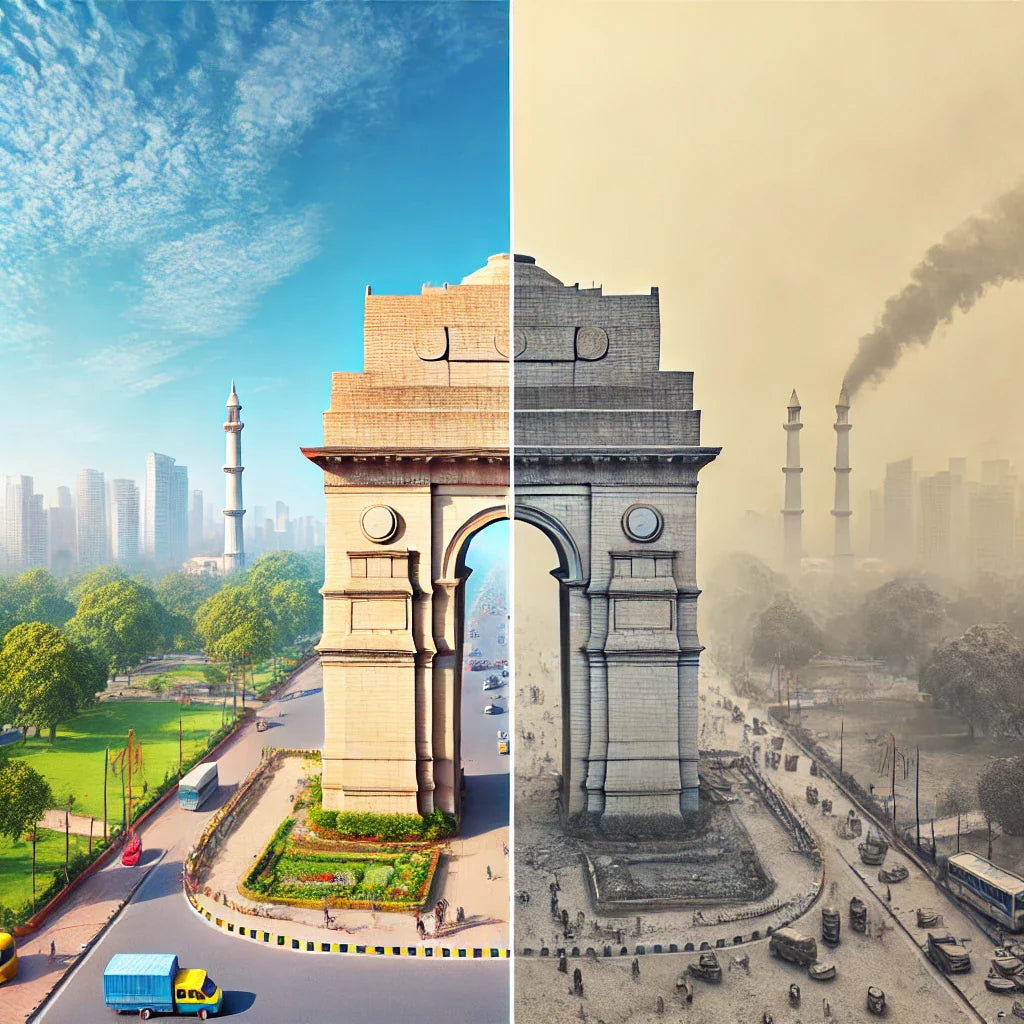Our founders’ family has spent over five decades in New Delhi, India.
Over the years, they’ve witnessed firsthand how the air has changed—not just outside, but inside homes, offices, and schools.
What was once breathable has turned into a silent hazard.
Delhi’s Worsening Air Crisis
New Delhi’s air pollution is no longer just a seasonal issue—it’s a year-round emergency. Over the past two decades, pollution levels have climbed to dangerous heights, affecting millions. In the winter months, the city becomes shrouded in thick smog.
In 2016, the Delhi government shut down schools due to air quality reaching hazardous levels.
By 2024, pollution hit record-breaking highs, with the Air Quality Index (AQI) exceeding 484, classifying the city’s air as ‘severe plus.’ This led to emergency measures: schools and offices closed, construction halted, and traffic restrictions imposed.
Respiratory diseases like asthma and bronchitis are becoming more common, particularly among children and the elderly. Cardiovascular issues, including heart attacks and strokes, are rising due to prolonged exposure to fine particulate matter. Studies have shown that living in such toxic air can reduce life expectancy by up to 12 years in the region. Beyond physical health, there are also cognitive effects. High pollution levels have been linked to slower brain function, decreased concentration, and even higher risks of neurodegenerative diseases.
The causes behind this crisis are many. Vehicle emissions continue to pump nitrogen oxides and fine particulate matter into the air as the number of cars on Delhi’s roads grows. Crop burning in neighboring states sends thick smoke into the city every winter, making an already bad situation worse. Industrial emissions from factories and power plants release harmful pollutants that accumulate in the atmosphere. Construction dust, kicked up by endless urban expansion, lingers in the air.
The Hidden Danger Indoors
While outdoor pollution dominates headlines, the air inside homes and offices is often much worse. People spend 90% of their time indoors, assuming they are protected, but the reality is the opposite. Poor ventilation allows carbon dioxide to build up, leading to drowsiness, headaches, and reduced cognitive function. Everyday household products—cleaners, paints, and furniture—release volatile organic compounds (VOCs) that contribute to long-term health problems. Gas stoves emit nitrogen dioxide, which has been linked to increased asthma rates and lung disease.
According to the World Health Organization (WHO), indoor air pollution contributes to over 3 million deaths per year. Yet, because it is invisible, most people don’t consider the air inside their homes and workplaces to be part of the problem. They suffer from fatigue, headaches, and difficulty concentrating without realizing that the air they breathe every day is making them sick.
Let's Bring Oxygen Back
There was a time when clean air was the default—when stepping outside didn’t feel like a health risk. When sleeping with the windows open didn’t mean waking up congested. That world can exist again, but only if we act now.
Our mission is to help our future look more like the past than the present.




Leave a comment
This site is protected by hCaptcha and the hCaptcha Privacy Policy and Terms of Service apply.